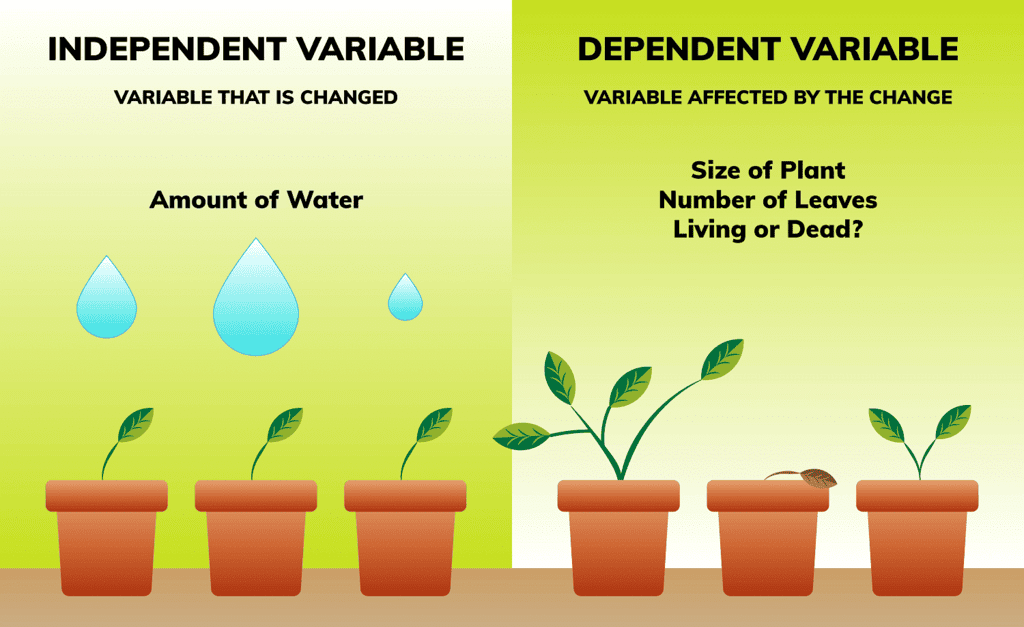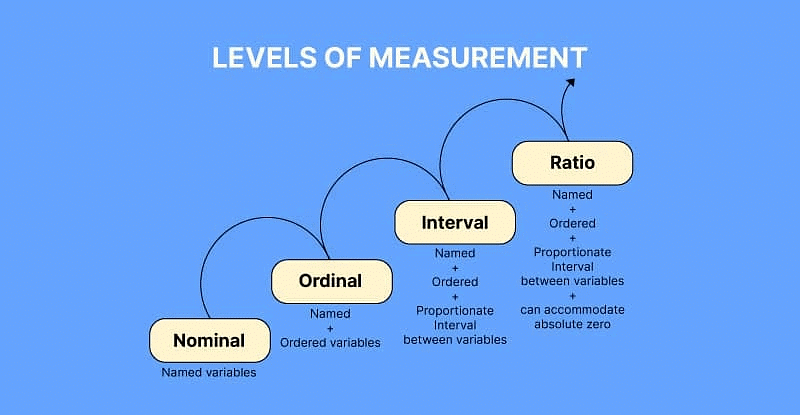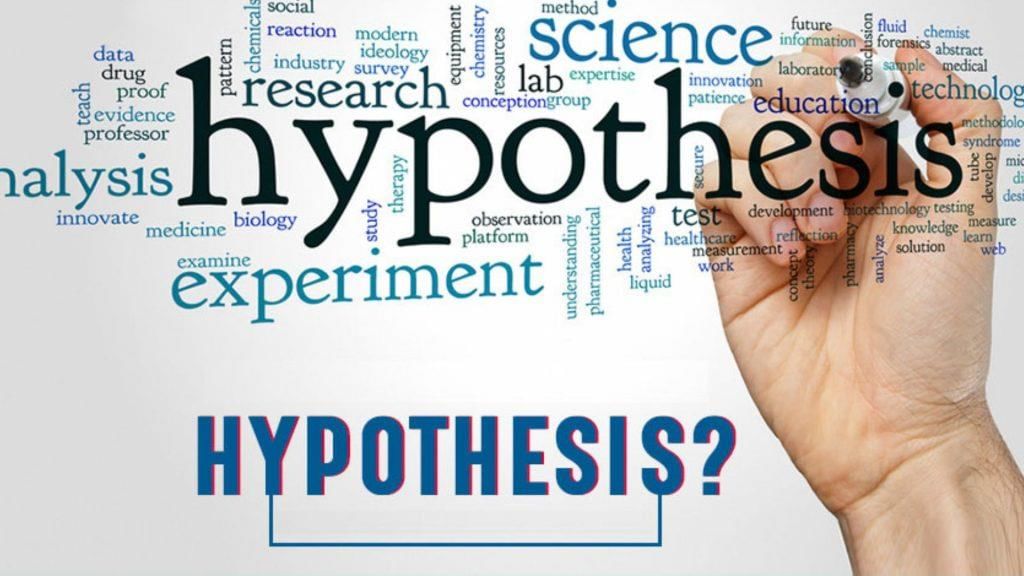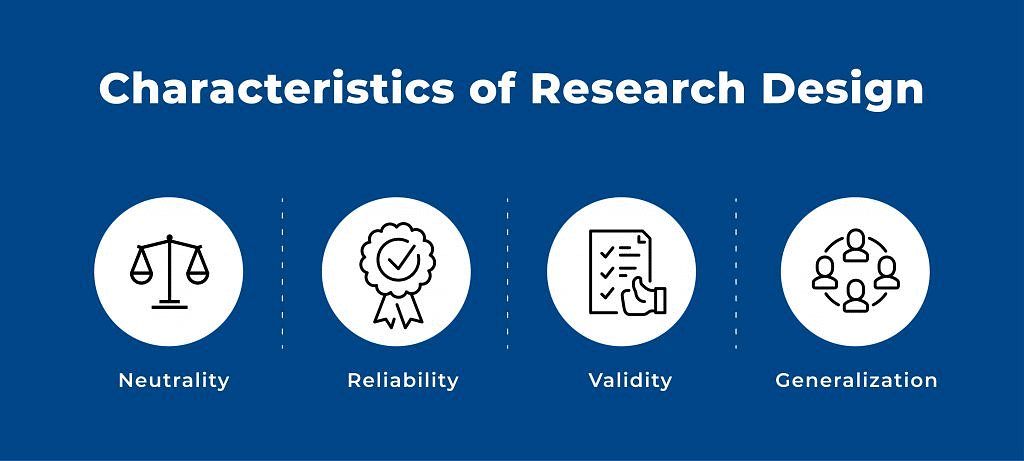Steps of Research - Literature Review, Hypothesis & Research Design | Research Aptitude for UGC NET PDF Download
| Table of contents |

|
| Steps of Research |

|
| Conducting the Literature Review |

|
| Developing the Hypothesis |

|
| Preparation of Research Design |

|
Steps of Research
A process of multiple scientific steps in conducting research work is called research process.

The steps are as follows:
- Formulating the Research Problem
- Reviewing the Research Structure
- Conducting the Literature Review
- Developing the Hypothesis
- Preparation of Research Design
- Sampling
- Collection of Data
- Analysis and Interpretation of Data
- Concluding the Data and Formal Write-up of the Research Report
Conducting the Literature Review
Literature review is a crucial stage in the research process, often being the lengthiest. It initiates even before setting research aims and objectives to ensure the uniqueness of the research problem.
- After defining research aims and objectives, the primary phase of the literature review commences.
- Various secondary data sources like books, newspapers, magazines, journals, and online articles need to be explored extensively.

The Purpose of a Literature Review:
- A literature review aids in establishing the boundaries of the researcher's field of study.
- It allows for a comprehensive understanding of the existing knowledge landscape related to the research topic.
- Identifying gaps in current knowledge and understanding trends in the field are crucial outcomes of a thorough literature review.
- By critically analyzing existing literature, researchers can formulate research questions that contribute meaningfully to the field.
Importance of Reviewing Literature:
- Helps the researcher to set boundaries and clearly define the research problem.
- Enables the avoidance of unproductive and irrelevant research areas by examining existing literature.
- Prevents accidental duplication of established findings, ensuring originality in research.
- Provides the researcher with a solid grasp of various research methodologies.
- Facilitates understanding of recommendations made by previous researchers, guiding future research directions.
Identify Variables and Formulate Hypothesis:
- Variables are measurable traits that can change during an experiment or research study. They are central to research and are defined as anything that can vary or change in value.
- A variable can have two or more values, representing a quality that can differ in magnitude or strength. For example, a person's attitude towards women empowerment can range from highly favorable to highly unfavorable.
Selection of Variables:
- The researcher's careful selection of variables is crucial. This involves deciding on the independent variable to be studied and which variables need to be controlled to facilitate changes in the independent variable.
- When choosing controlled variables, a researcher must assess how they can manipulate the independent variable effectively.
- Behavioral considerations play a key role in variable selection. It's important not to have an excessive number of variables, as this can complicate analysis.
- Financial resources should also be taken into account when selecting independent and dependent variables for a study.
- Additionally, researchers need to be mindful of time constraints when finalizing their variables for study.
Types of Variables
- Independent Variable
- Dependent Variable
- Intervening Variable
- Extraneous Variable
- Attribute Variable
- Discrete Variable
- Categorical Variable
- Continuous Variable
- Active Variable
1. Independent Variable
- Definition: The independent variable is the variable manipulated by the researcher in an experiment. It has an impact on or influences another variable within the system.
- Explanation: In a study investigating the effects of fertilizer on plant growth, the amount of fertilizer applied is the independent variable. By altering the fertilizer amount, researchers aim to observe its influence on plant growth.

2. Dependent Variable
- Definition: The dependent variable is the variable that changes in response to modifications made to the independent variable. It is not responsible for influencing another variable within the system.
- Explanation: In the same plant growth study, the height of the plants would be the dependent variable. It is expected to vary based on the different amounts of fertilizer applied, which is the independent variable.
3. Intervening Variable
- Definition: Intervening variables are hypothetical variables utilized to explain causal relationships between other variables. They serve as mediators through which one variable impacts another.
- Explanation: In a research project examining the impact of stress on academic performance, coping mechanisms could act as intervening variables. These mechanisms might clarify how stress levels influence student grades.
4. Extraneous Variable
- Definition: Extraneous variables are those that influence the dependent variable but are not part of the main system under study. These factors can introduce unwanted variation into results.
- Explanation: In a study on the effects of a new teaching method on student performance, factors like student motivation or teacher experience could be extraneous variables. Even though not the focus, they could impact the study outcomes.
Types of Statistical Variables
- Continuous Variable: A continuous variable is one that can be expressed continuously, having an infinite number of values between any two points.
- Discrete or Non-Continuous Variable: These are numeric values with a countable number of values between any two points. For instance, consider the number of customer complaints as a discrete variable.
- Categorical Variable: A categorical variable consists of a finite number of categories or distinct groups without a logical order.
- Active Variable: An active variable, also known as an experimental variable, is one that can be manipulated.
- Attribute Variable: An attribute variable is a type of variable that cannot be manipulated by a researcher. These variables are inherent to a person or object and cannot be changed.
Measurement of Variables
Measurement of variables is crucial in research studies. There are four scales used for measuring variables:

- Nominal Scale: This scale is used for variables that are categorical and do not have a natural order, such as gender or ethnicity.
- Ordinal Scale: This scale ranks variables in a specific order without indicating the degree of difference between them, like in a ranking system.
- Interval Scale: Variables measured on an interval scale have equal intervals between consecutive points but no true zero point, like temperature measured in Celsius.
- Ratio Scale: This scale has equal intervals between points and a true zero point, allowing for the interpretation of ratios, such as weight or height.
Developing the Hypothesis
The term "hypothesis" is derived from the words 'hypo' and 'thesis', where 'hypo' signifies something tentative or subject to verification, and 'thesis' represents a statement proposing solutions to a problem.

- Therefore, a hypothesis can be described as a provisional explanation of a research problem, presenting a potential outcome of the research.
- Good and Hatt define a hypothesis as a proposition that can be tested to establish its validity.
- Kerlinger characterizes a hypothesis as a speculative statement indicating the relationship between two or more variables.
- The hypothesis serves as a robust research tool for attaining reliable knowledge. It involves a presumptive statement based on available evidence, which the researcher aims to validate through the study.
- A hypothesis is formulated as a suggested solution to problems, with the aim that the subsequent study may lead to either rejection or confirmation.
Features of Hypothesis
- The hypothesis is a tentative explanation of a research problem, aimed at possible outcomes of the study.
- It is a proposition that can be tested to ascertain its validity, according to Good and Hatt.
- Kerlinger defines a hypothesis as a conjectural statement regarding the relationship between variables.
- It is a powerful research tool that enables the acquisition of dependable knowledge.
Characteristics of a Good Hypothesis
- It should be clearly and precisely stated.
- It should be testable.
- It should state the expected relationship between variables.
- It should be limited in scope.
- It should be consistent with most known facts.
- It should be stated in simple terms.
Importance of Hypothesis
- A hypothesis guides the research process by providing a clear direction and focus.
- It helps in organizing thoughts and ideas, making the research more structured.
- By formulating a hypothesis, researchers can make predictions and test their theories.
- It serves as a starting point for further investigation and analysis.
Key Importance of Research Hypotheses
- Ensuring the entire research methodologies are scientifically sound and valid.
- Aiding in assessing the likelihood of research failures and successes.
- Establishing a connection to the underlying theory and the specific research question.
- Facilitating data analysis and assessing the validity and reliability of the research.
- Offering a foundation or proof to substantiate the research's validity.
- Enabling the description of the research study in tangible terms rather than theoretical ones.
 |
Download the notes
Steps of Research - Literature Review, Hypothesis & Research Design
|
Download as PDF |
Types of Hypotheses
Null Hypothesis: This denotes the zero hypothesis where the researcher has no active role in formulating it. It posits that no statistical significance is present within a given set of observations.
Directional and Non-Directional Hypotheses:
- Directional Hypothesis: Specifies the expected direction of differences or associations, being more specific about outcomes.
- Non-Directional Hypothesis: Indicates only the presence of a difference or association between variables without specifying the direction.
Declarative Hypothesis: Formulated as a statement declaring a relationship between the variables under consideration. It is typically used when the researcher makes a positive assertion about the study's outcome.
Complex Hypothesis: Demonstrates the correlation between multiple dependent and independent variables. For instance, a hypothesis stating that increased consumption of fruits and vegetables leads to weight loss, improved skin quality, and a reduced risk of various diseases.
Statistical Hypothesis: A statistical hypothesis, also known as confirmatory data analysis, represents an assumption concerning a population parameter.
Descriptive Hypothesis: A descriptive hypothesis is a statement that pertains to the existence, size, form, or distribution of a variable. It prompts researchers to contemplate the implications of a finding that is either supported or rejected.
Relational Hypothesis: A relational hypothesis is a statement about the relationship between two variables in a given context. It may be correlational or explanatory.
- Correlational Hypothesis: This type of hypothesis suggests that variables occur together in a specified manner, without implying causation.
- Explanatory Hypothesis: This hypothesis describes a relationship between two variables where one variable influences a specific effect on the other variable.
Alternative Hypothesis: An alternative hypothesis stands in contrast to the null hypothesis, positing the presence of statistical significance or a relationship between variables. Researchers aim to demonstrate or establish a connection between variables.
Hypothesis Testing
- Hypothesis testing involves calculating the value of statistics and comparing it with a tabulated statistic value. If the computed value falls within the range of the tabulated value, the null hypothesis is not rejected.
- The typical level of significance considered for the tabulated value is usually 5% or 1%.
- Hypothesis testing, or significance testing, is a technique used to test a claim or hypothesis regarding a parameter in a population by utilizing data obtained from a sample.
- The primary aim of hypothesis testing is to assist researchers in drawing conclusions about a population by analyzing a sample extracted from that population.
Preparation of Research Design
According to Russel Ackoff, "Research design is the process of making decisions before a situation arises in which the decision is to be carried out." In this step, the researcher prepares the conceptual framework within which the research would be carried out. Following are the significant aspects which must be kept in mind while preparing a research design.

- Research design involves making decisions prior to the actual implementation of those decisions.
- The researcher establishes the framework that will guide the research process.
- Key considerations include the methods, tools, and approaches to be used in the research.
- It is essential to define the scope and boundaries of the study during this stage.
- Research design outlines the overall plan and structure of the research project.
- Clarity in research design helps in ensuring that the study objectives are met effectively.
- Effective research design is crucial for the success and credibility of the research outcomes.
Objectives of Research Design
- Research design achieves the following aims of the researcher:
- It makes research efficient.
- It optimizes the utilization of research.
- It ensures reliability and flexibility.
- To find solutions to problems and questions in research.
- To arrange research systematically.
- To provide clear direction regarding research.
Types of Research Designs
- Exploratory Research Design: Exploratory research aims to explore research questions without offering final solutions to existing problems. It is also referred to as 'formulative research design'. This type of research is typically conducted to examine undefined problems, focusing on developing theories or new ideas. It employs qualitative and unstructured research methods.
- Conclusive Research Design: Conclusive Research Design is a structured approach aimed at aiding decision-makers in evaluating and selecting the best course of action within a specific scenario.
- Experimental Research Design: Experimental Research Design involves conducting research with a scientific approach where a specific set of variables are kept constant while another set is being measured as the subject of the experiment.
- Descriptive and Diagnostic Research Design: Descriptive and Diagnostic Research Design focuses on outlining the characteristics of a specific individual or group.
- Hypothesis-Testing Research Design: Researcher examines the hypothesis regarding the causal relationship between two or more variables. These studies necessitate procedures that minimize biases, enhance reliability, and allow for making inferences about causality.
- Cross-Sectional Research Design: When information is gathered on multiple cases simultaneously, specifically at the same time, it is referred to as utilizing a cross-sectional design. This methodology is employed to amass a set of quantitative and quantifiable data involving two or more variables.
- Causal Comparative Research Design: This research design aims to establish relationships between independent and dependent variables after an event has occurred. It investigates the causes or consequences of differences among various groups.
- Longitudinal Research Design: Involves high time and cost commitments. Less commonly utilized in social research. An extension of survey research incorporating self-completion questionnaires or structured interviews within cross-sectional research design.
|
16 videos|26 docs|9 tests
|
FAQs on Steps of Research - Literature Review, Hypothesis & Research Design - Research Aptitude for UGC NET
| 1. What are the key types of variables that researchers consider when conducting a literature review? |  |
| 2. How do researchers develop a hypothesis in the research process? |  |
| 3. Why is it important to conduct a literature review before formulating a hypothesis? |  |
| 4. What is the significance of preparing a research design in the research process? |  |
| 5. What are some common research design types that researchers consider when planning a study? |  |






















